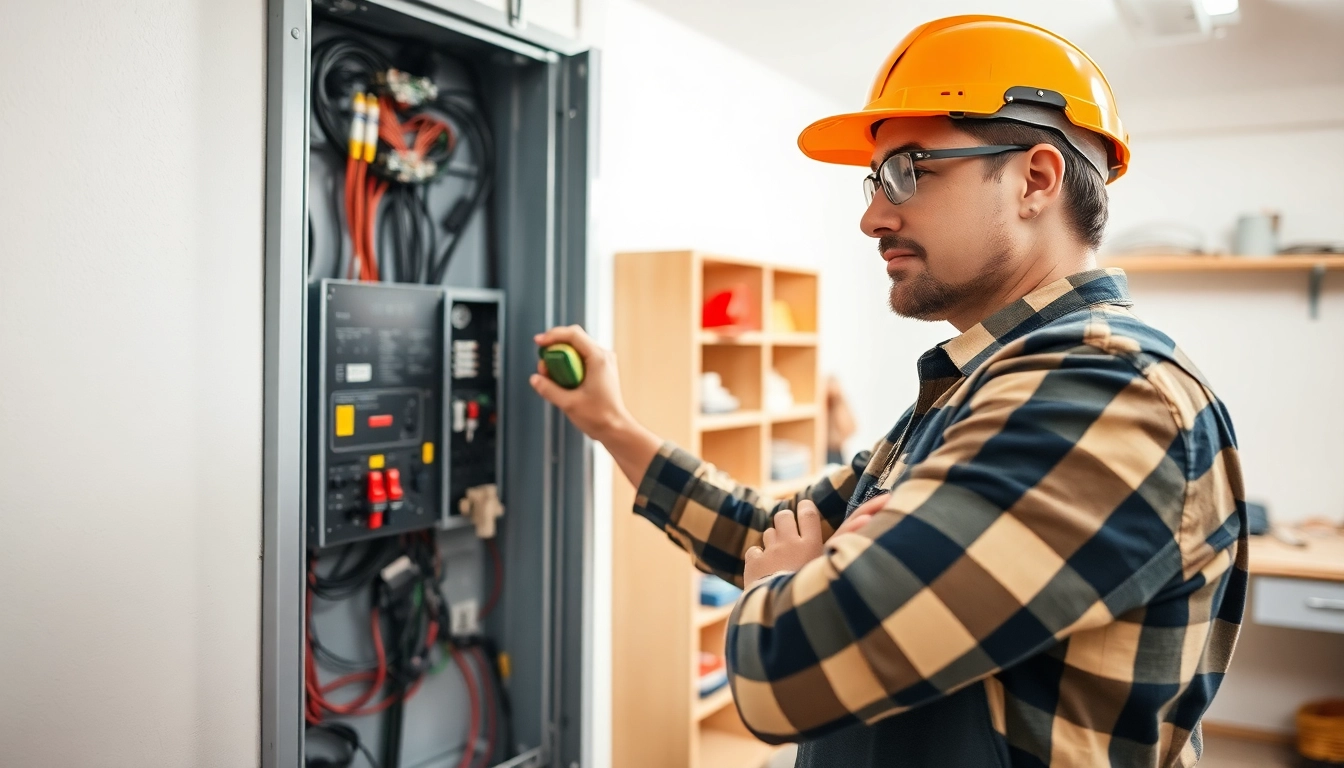Understanding Electrical Panel Upgrades
Upgrading your electrical panel is often overlooked but can be crucial for modern electrical needs in any home. An outdated electrical panel can lead not only to inefficiency but also to safety hazards. This article will explore the ins and outs of Electrical Panel Upgrade, detailing when and why an upgrade is necessary, the benefits involved, cost considerations, and steps for a successful upgrade.
What Is an Electrical Panel Upgrade?
An electrical panel, also known as a breaker box or service panel, is the central hub for your home’s electrical system. It distributes power from the utility company to various circuits throughout your home. An electrical panel upgrade involves replacing or upgrading the existing panel to enhance capacity and safety features, usually from a lower amperage to a higher amperage panel (e.g., from 100 amps to 200 amps).
Why Upgrade Your Electrical Panel?
There are several compelling reasons to consider upgrading your electrical panel:
- Increased Power Demand: Many households utilize more electrical devices than in the past, necessitating higher power capacity.
- Improved Safety: Older panels may lack modern safety features, making them prone to fire hazards or malfunctions.
- Home Renovations: Additional renovations, like adding rooms or electric vehicle (EV) chargers, may require more power than your current panel can handle.
- Compliance with Codes: Building codes may have changed since your home was built, and your panel might not meet current regulations.
Signs You Need an Upgrade
Several signs indicate that your electrical panel may require an upgrade:
- Your panel has fuses instead of circuit breakers, indicating outdated technology.
- Frequent tripping of breakers or blown fuses, which may suggest that your panel cannot handle the load.
- The panel is rusted or damaged, affecting its performance and safety.
- Your home uses 100 amps but is undergoing expansion or heavy appliance installations.
- Presence of a federal Pacific panel or other brands known for safety issues, requiring an immediate upgrade.
Benefits of Upgrading Your Electrical Panel
Enhanced Safety Features
Modern electrical panels come equipped with enhanced safety features that minimize fire risks and improve the protection of your home’s wiring. For example, circuit breakers automatically shut off the power when they detect an overload, whereas older panels may not have this capability.
Increased Electrical Capacity
Upgrading to a panel that offers higher amperage allows for more circuits, which translates to sufficient power for today’s household demands. With the rise of EV chargers, smart home devices, and energy-efficient appliances, having a panel that supports 200 amps or more is increasingly common and necessary.
Improved Home Value
Investing in an electrical panel upgrade can significantly boost your home’s market value. Prospective buyers often view updated electrical systems positively, as they mean fewer issues and an assurance of safety and efficiency in their new home.
Cost Considerations for Electrical Panel Upgrades
Average Costs and Budgeting Tips
The cost of upgrading your electrical panel varies widely, generally falling between $800 and $4,000. The average upgrade from 100 amps to 200 amps tends to average around $1,300 to $3,000.
To budget effectively, consider these tips:
- Get multiple quotes from licensed electricians to understand the price range.
- Account for any additional costs, such as potential wiring upgrades or the need for permits.
- Plan for unexpected expenses by increasing your budget by 10-15%.
Factors Affecting Upgrade Costs
Several factors can influence the overall cost of an upgrade:
- Panel Size: Upgrading to a larger capacity panel will invariably cost more.
- Labor Costs: The cost for labor varies by region and depends on the complexity of the installation.
- Permitting and Inspection Fees: Depending on your location, additional fees could apply for necessary permits and inspections.
- Upgrades to Wiring: If your home’s wiring is outdated or not compatible with new panels, further upgrades may be required.
Financial Incentives and Rebates
Homeowners may qualify for various financial incentives or rebates when upgrading their electrical panel. Programs like the Charge Ready Home initiative provide rebates for those upgrading panels to support EV chargers. Homeowners should explore tax credits related to energy efficiency improvements, which can help recoup costs associated with panel upgrades.
Steps to Successfully Upgrade Your Electrical Panel
Choosing the Right Electrician
Selecting a licensed and experienced electrician is crucial to ensuring a smooth and safe upgrade. Look for electricians who have a solid reputation, positive reviews, and accurate estimates of cost and timeline. It’s advisable to also verify their licensing and insurance status.
Permits and Regulations
Before beginning an upgrade, it’s essential to check local codes and obtain the necessary permits. Most regions require a permit for electrical upgrades to ensure safety and compliance with current regulations. Failure to obtain the proper permits may halt your project and result in fines.
Preparing Your Home for the Upgrade
Before any physical work begins, it’s a good idea to prepare your home for the upgrade. This may involve:
- Clearing the work area around the panel to facilitate the electrician’s work.
- Notifying affected parties of the outage, especially if the panel upgrade will require shutting off power for an extended period.
- Securing any pets during the work to ensure their safety and that of the electricians.
Maintaining Your Electrical System Post-Upgrade
Regular Inspection and Maintenance
After upgrading your electrical panel, routine inspections and maintenance are crucial for ensuring continued safety and functionality. Schedule an inspection by a licensed electrician every few years to check for issues like corrosion, loose connections, or signs of wear.
Identifying Future Needs
As technology continues to evolve, the electrical needs of homes may grow. Being aware of future needs helps homeowners proactively consider manageable upgrades or expansions, especially if planning to include more sophisticated appliances or devices.
Upgrading in Phases
If budget constraints prevent a full upgrade at once, homeowners can consider a phased approach. This could involve preserving components of the existing electrical system while upgrading the most critical areas, such as circuits for high-demand appliances first.
In summary, upgrading your electrical panel is an essential step to ensure safety, efficiency, and capacity in modern households. Understanding the reasons behind the need for an upgrade, the benefits involved, and steps for implementation can significantly enhance your home’s electrical infrastructure. By taking proactive measures and engaging qualified professionals, you can safeguard your home and improve its long-term value.









